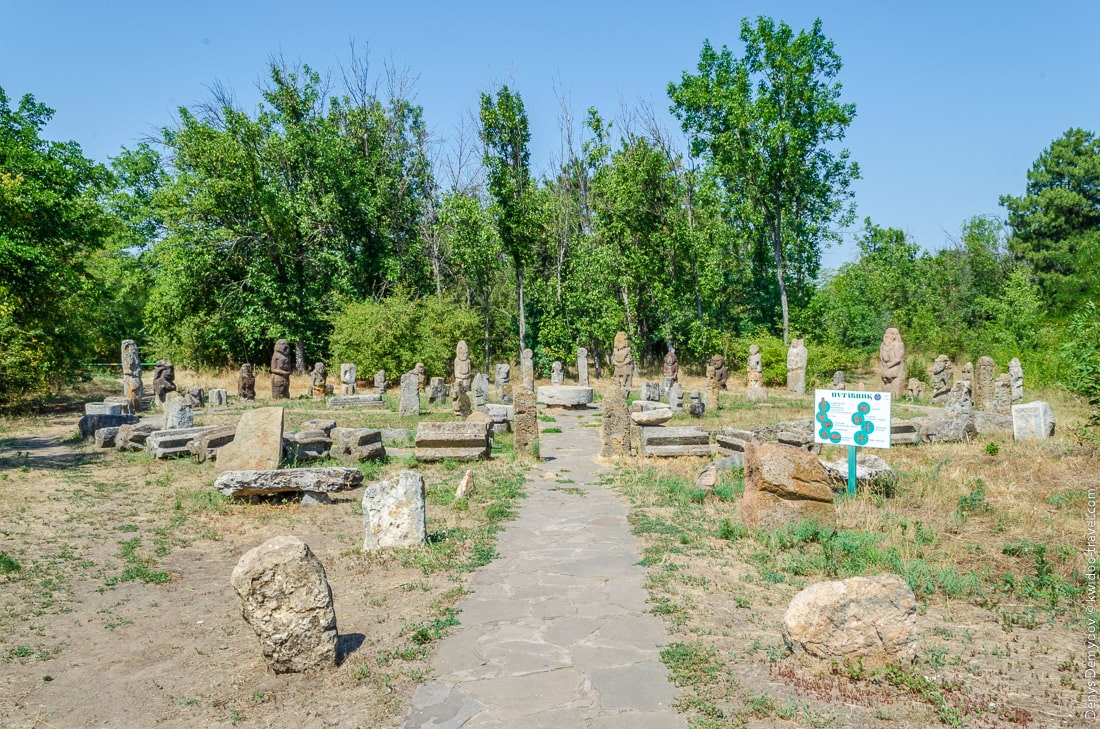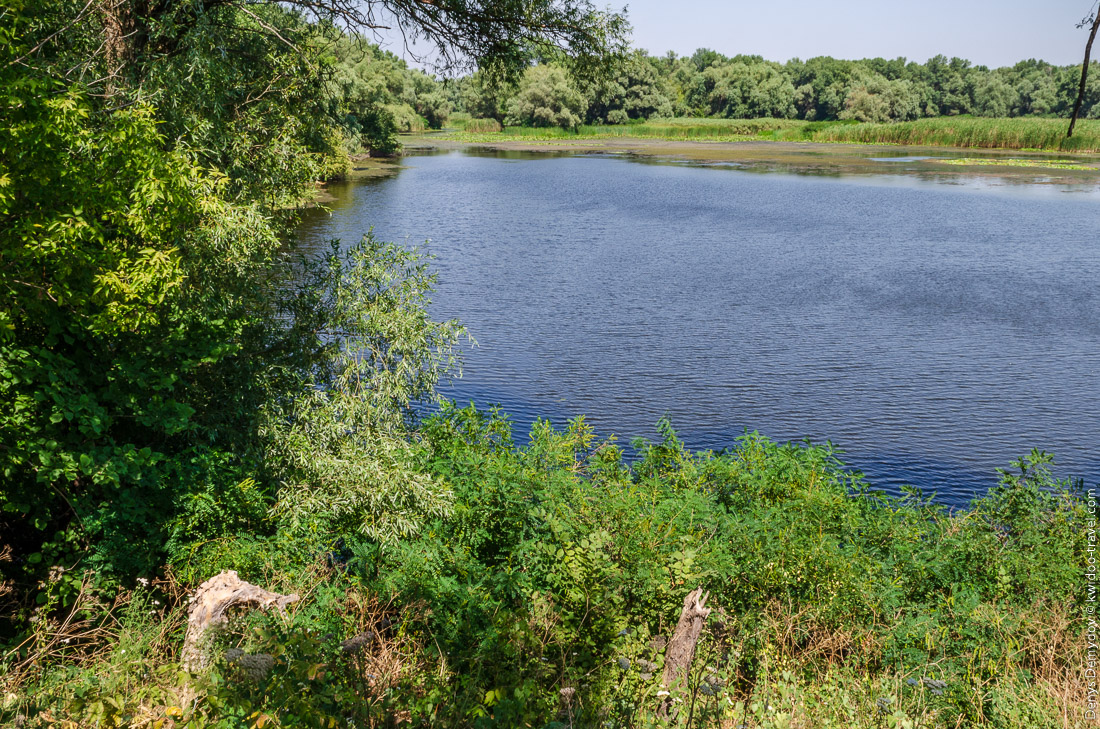Scythian camp on Khortytsya Island
Scythian Stan is one of the locations on Khortytsya Island in Zaporizhzhya. It positions itself as an “open-air museum” and “one of the most famous memorial-territorial complexes on Khortytsya”.
Even though the location is practically in the center of the island, I couldn’t get here. It is located far away from the main paths and roads. But, finally, I went to the Scythian camp. What came out of it – read on.

It is not by chance that the museum was opened at this location. One of the main barrow groups of the island is focused here. “Living”, reconstructed and stylized – there are eleven of them here. The oldest of them, according to a number of researchers, was built in the III millennium BC [1].
The main mound in this group is considered to be “Zorova Mogila” or “Dozorny Mound”. It is the highest point on the island, as evidenced by a geodesic sign erected here nearby in 1921.
It is assumed that such a favorable position contributed to the construction of the Cossack watchtower – beket. A number of them have been reconstructed and are now open to tourists. You can climb here if you are confident in your abilities.

The view from the height is wonderful. One could sit here and read a book for hours, occasionally taking a break from literature and looking around with a master’s eye: steppes, rocks, the Dnieper. But, the scorching sun quickly heats up your head even in a cap. So, to escape the heat, I had to go down again.
It should be noted that a number of scholars are extremely skeptical about the Scythian camp, considering it far from scientific reconstruction, not carrying scientific, cognitive or spiritual influence [2]. This can be seen with the naked eye: the beckets, for example, are welded from metal, which is rather meant to entertain tourists.

Here is also collected a large number of historical monuments brought from different corners of Zaporizhzhya region. They were discovered during excavations by archeological expeditions, but they did not represent any special value for science. That’s why all this good was brought here and installed for the guests of Khortytsya Island to see.
At first it is hard to understand what you see in front of you. But, it is worth coming closer and looking closer – as you will see that there are stone crosses, millstones, stupas and grain grinders…. Even the troughs are wooden!
There is nothing here! It’s like a museum of discarded things in Kiev, but most of them are hundreds and thousands of times older than any of us.
Naturally, it was not without the famous “stone women” – sculptures that were especially popular in the steppe area.

While taking this shot, for a second I remembered the beautiful Askania Nova reserve in the Kherson region. It is literally the same. And there is nothing surprising in it, the territories are located close to each other and were inhabited at different times by the same peoples.

One of the stylized buildings nearby, on the wall, depicts one of these very peoples – the Scythians. It was painted for a reason. It’s a fragment of a relief on a bowl [3] from the Kul-Oba burial mound (located near the now extinct village on the Crimean Peninsula). The bowl itself is on display in the Hermitage Museum in St. Petersburg.
This is how the inhabitants of these places portrayed themselves, that from the 8th century B.C. to the 4th century A.D. they were full masters of these steppes.
Some claim it is a place of energetic power. Some say it has historical significance. I couldn’t answer for myself why it was worth coming here. But it was definitely worth it.
Of course, the Scythian camp is by no means the main attraction of the island, but if you have a chance to visit it, it is worth making a small “detour” on the way.
Below you can see the location of the Scythian camp on the map to understand how to get here better. The easiest way to get here is by car or bicycle.
- Khortytsya // 7 Wonders of Ukraine URL: http://www.ei.hneu.edu.ua/sites/default/files/pictures/map/hortiza.html (date of address: 03.02.2020).[↩]
- Сокульский А. Л. Острів Хортиця та його історико-культурне значення в процесі виникнення і становлення запорозького козацтва: автореф. дис. канд. ист. наук: 07.00.01. Переяслав-Хмельницкий, 2014. С. 26.[↩]
- Nouveau Larousse illustré. Tome Septieme / Под ред. Pierre Larousse. Paris: Éditions Larousse, 1900. С. 610.[↩]
















Leave a Reply
Want to join the discussion?Feel free to contribute!